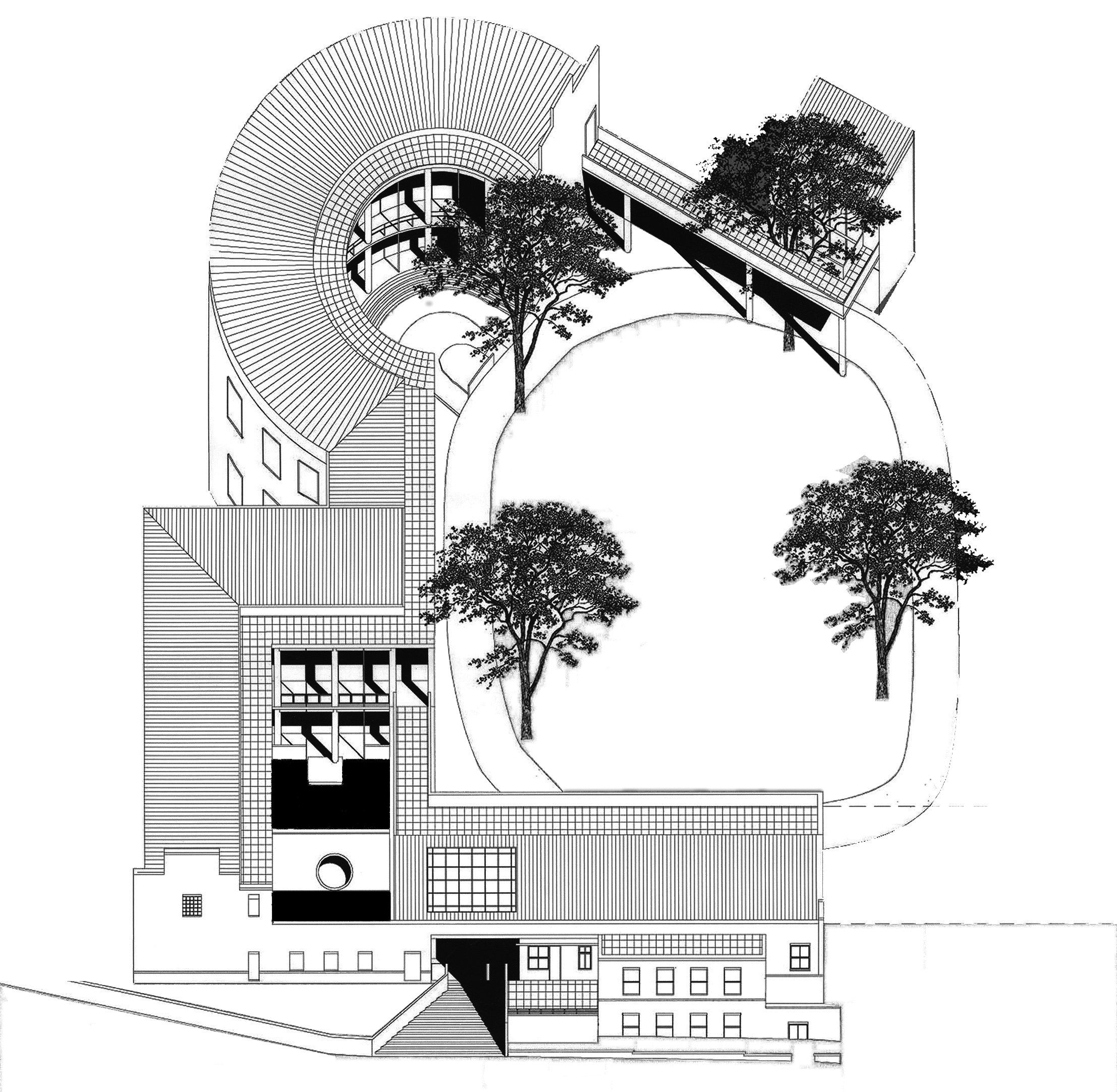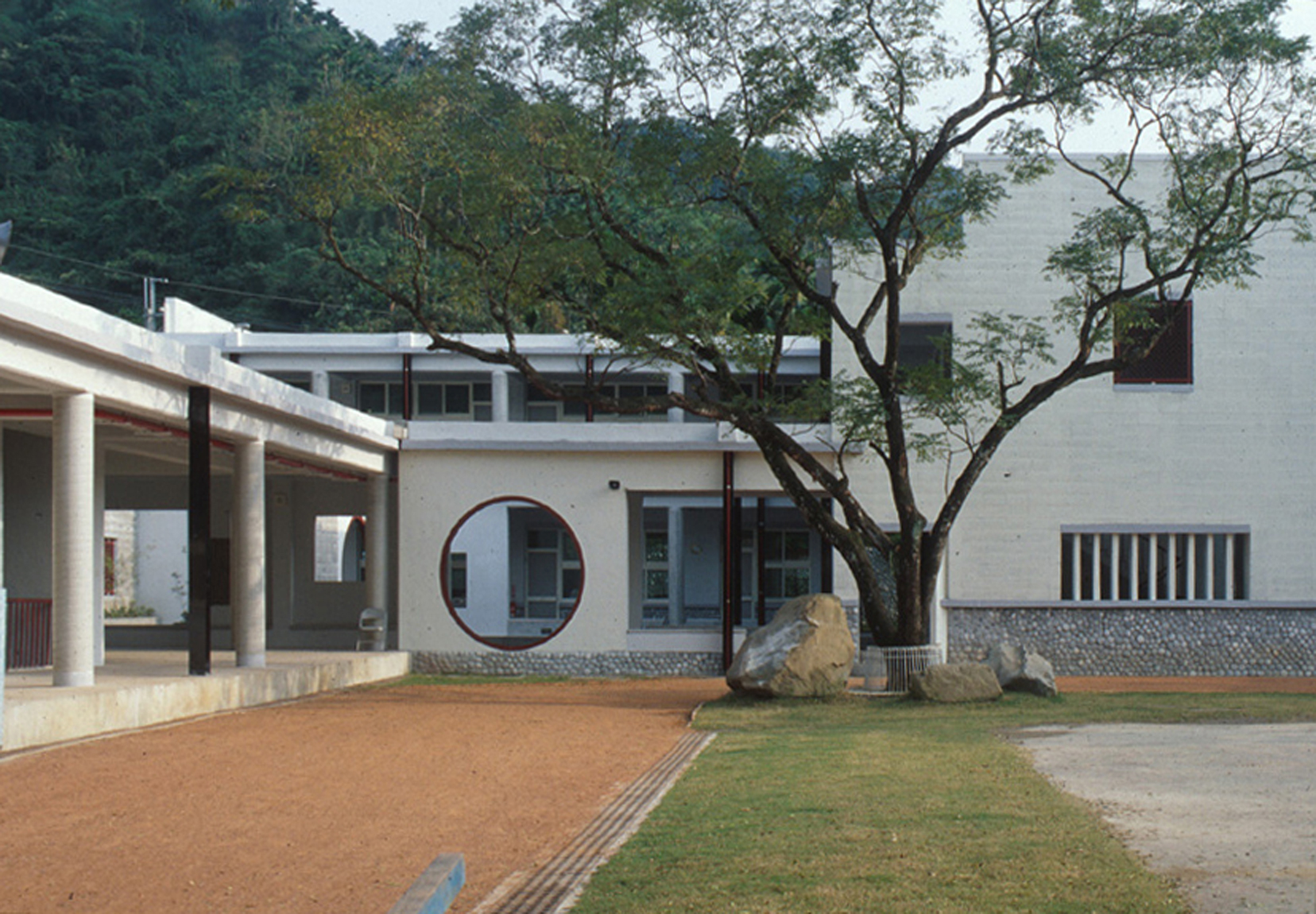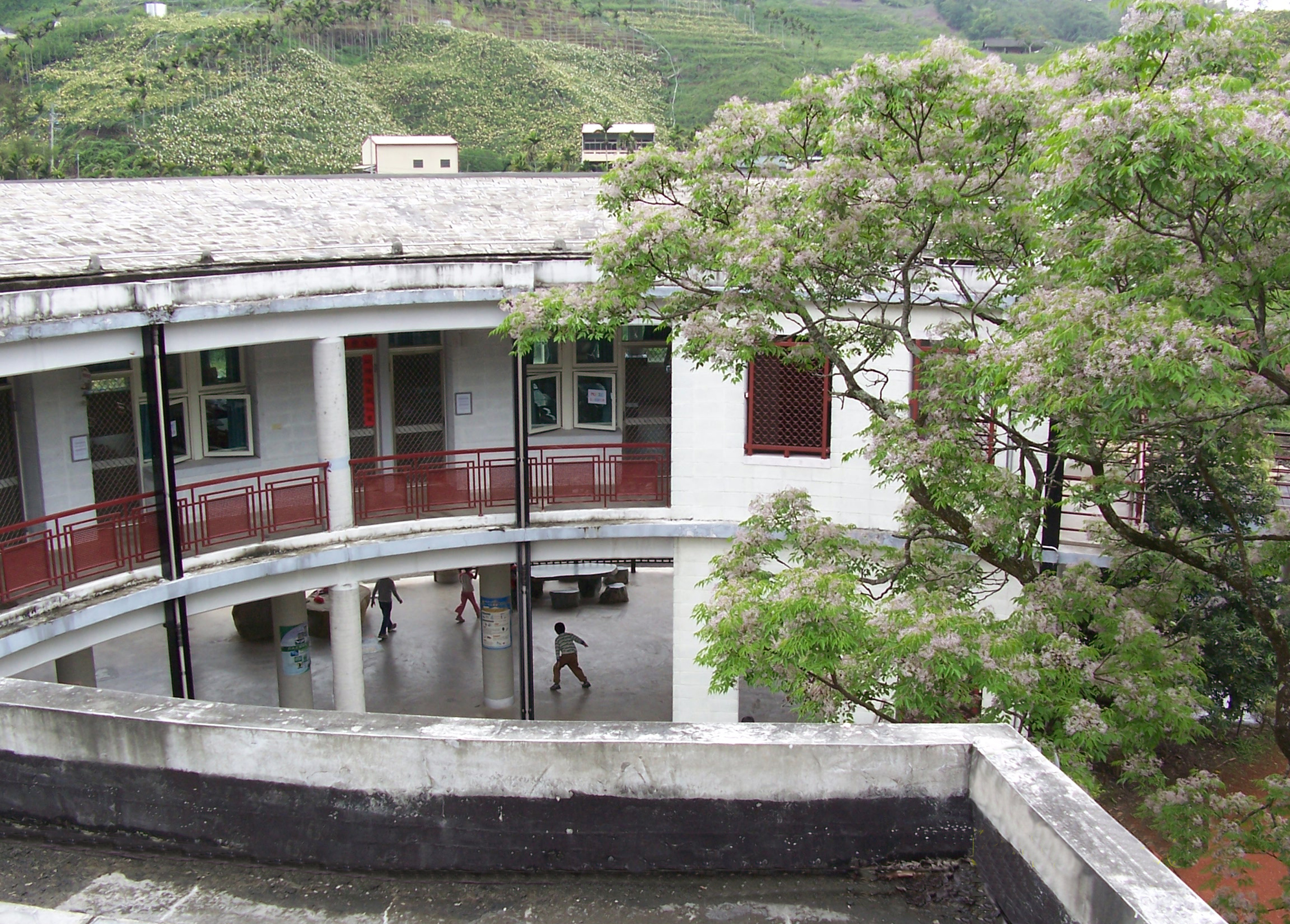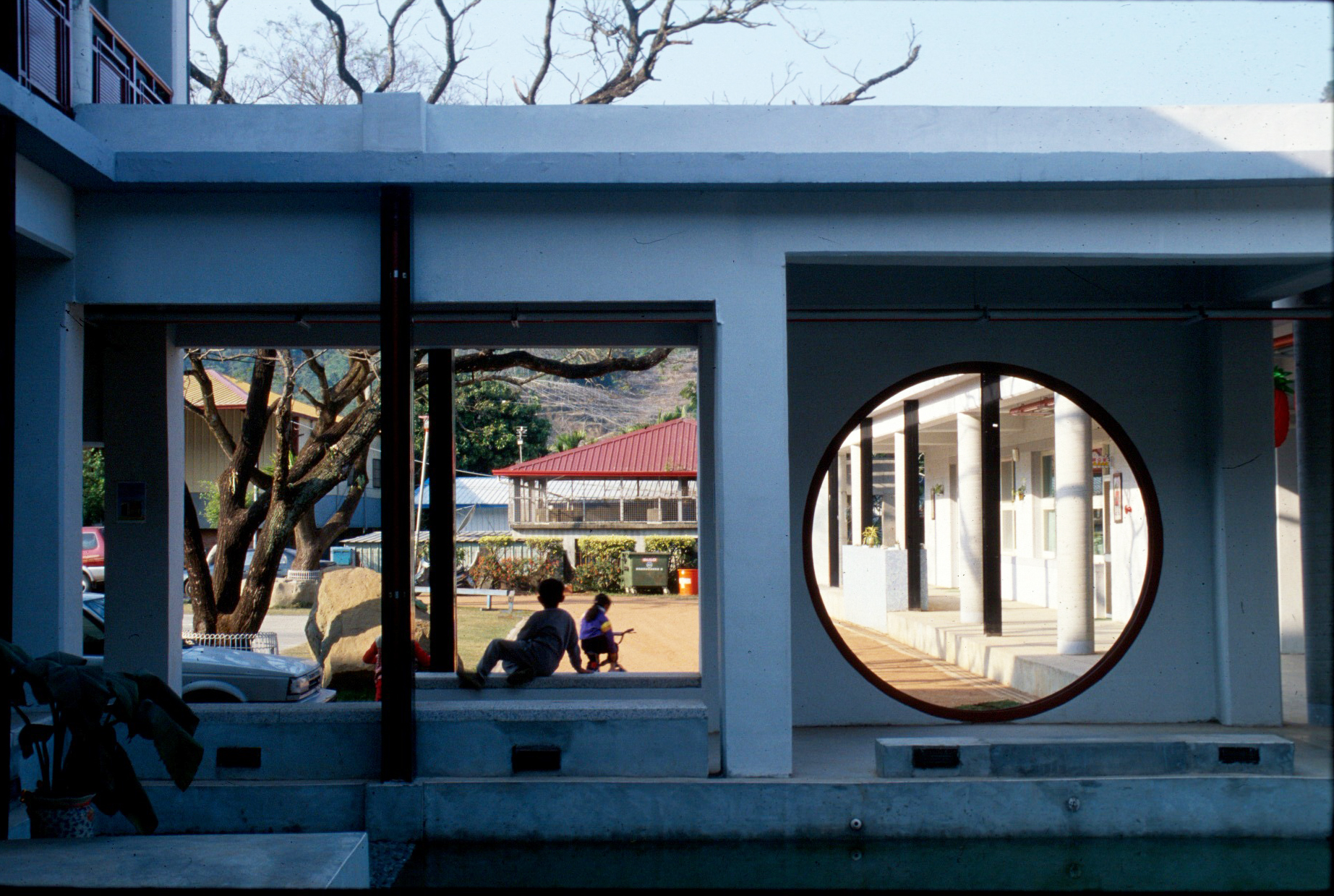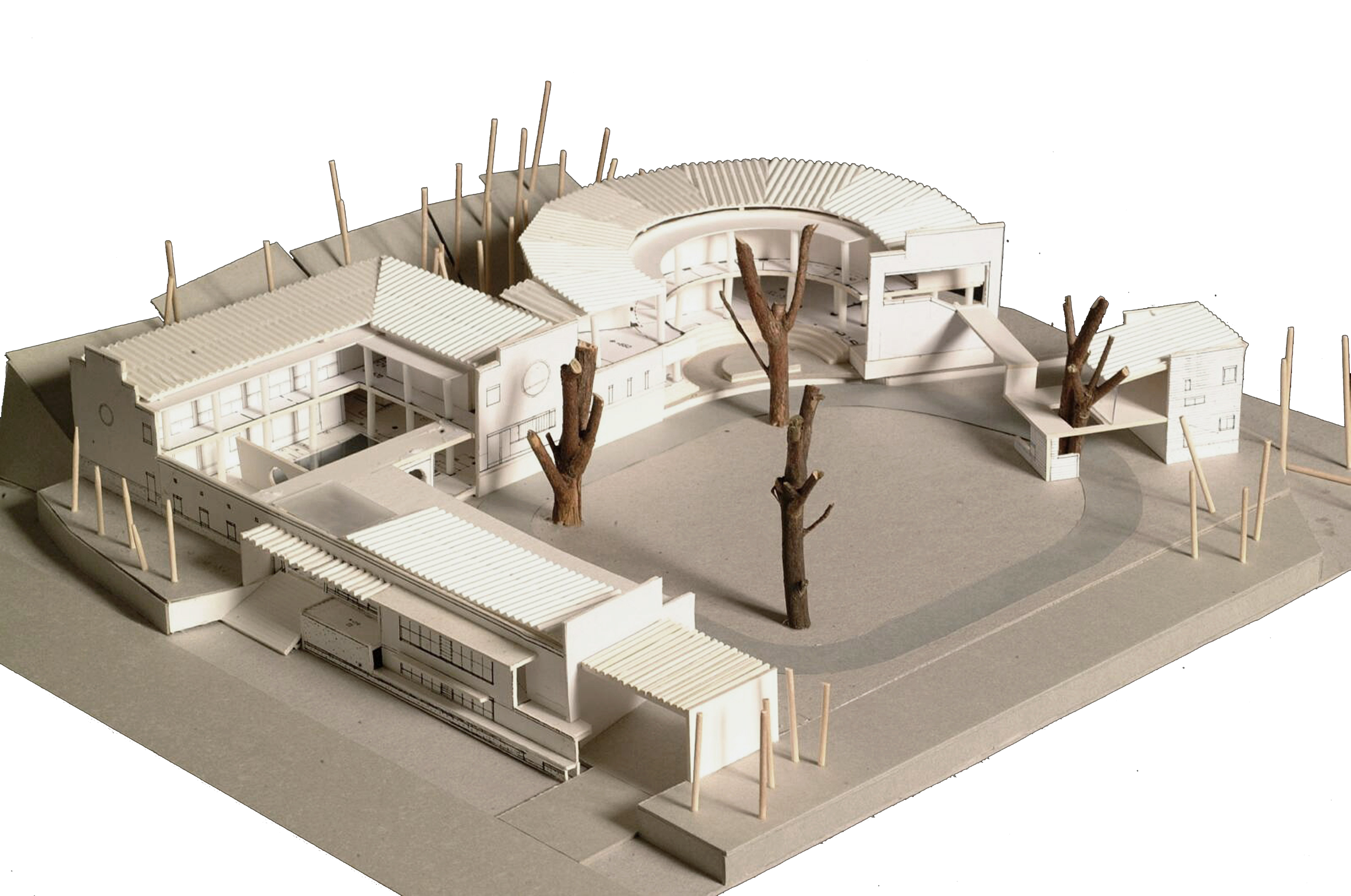Chongkeng Elementary School
2001
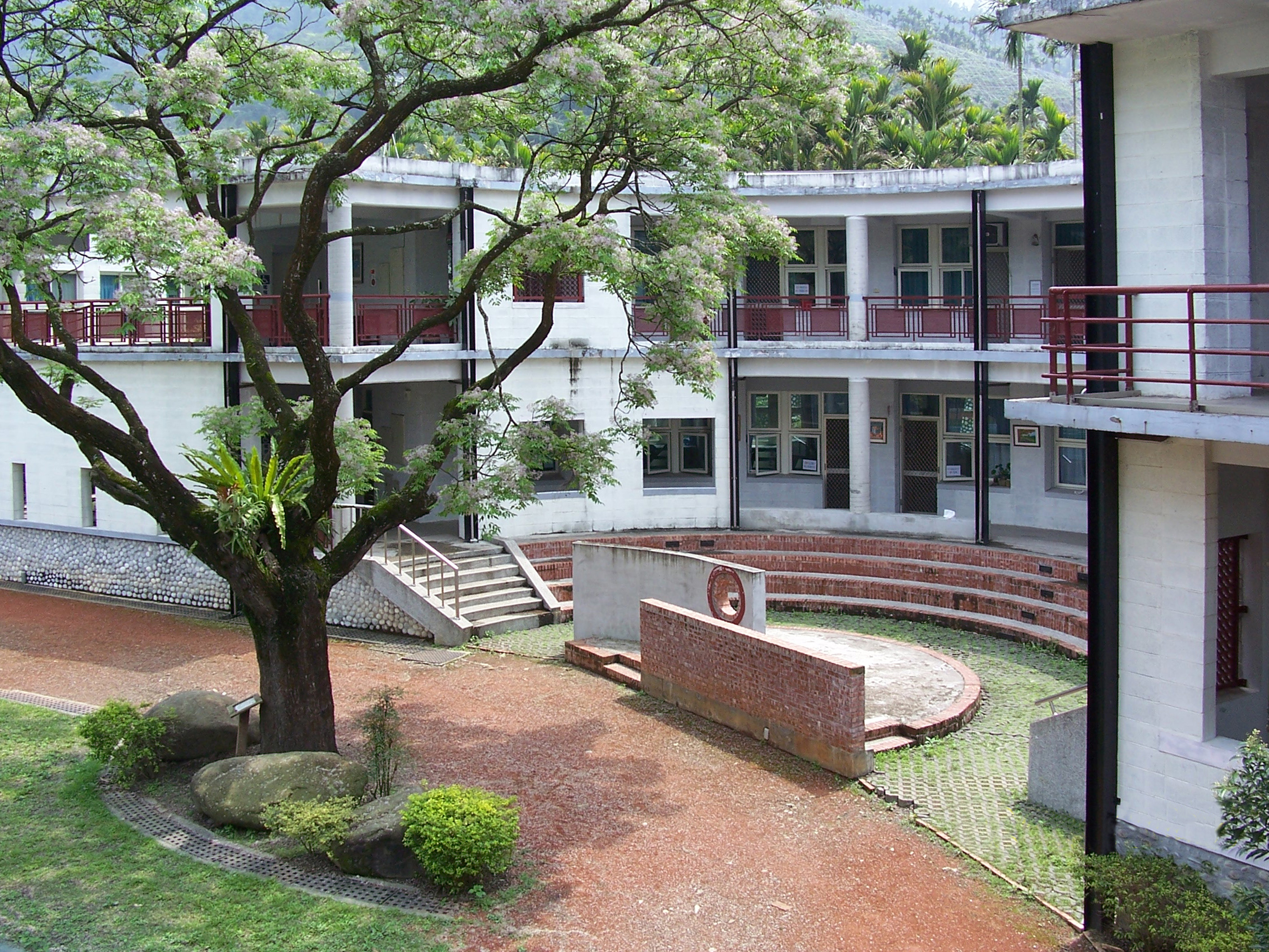

第一次踏入中坑國小,一眼看到校園當中空地 四個角落上四棟高聳的苦楝樹,沿著四片濃 綠的樹蔭,依序像道具般的排列著座椅、司令 臺、球架、秋千,不太寬的跑道就繞著這四棵 樹的外圍,圍成了一個小操場,再往外一圈是 原有校舍與教室,然後是四周的果園;再來是 檳榔樹和遠山,這四棵苦楝樹所界定出的操 場,清晰地定義了基地的空間性格與校園的地 點感。
這是臺中縣和平鄉,在由東勢往大雪山中途的 一個山區國小,大約有八十幾名學生,村落 裏以客家人為主。之後幾次到學校去,我們踱 步在繞著操場的四棵大樹之間,想著教室的位 置、音樂教室旁邊樹下的表演臺、圖書館窗外 下午的陽光,想象著未來的校舍繞著四棵大樹 發展出的四個場景和四個敘事,想起北宋畫家 郭熙的“林泉高致”裏說的四種山水畫的情境: 可行、可觀、可遊、可居。
建築以一序列長條形單邊走廊的校舍,圍合著 校園中間空地上的四棵大樹,與其分別產生了“ 經過”、“圍繞”、“結合”與“開放”的四種曖昧而 又親和的不同敘事關系,分別以長方形合院水 池、半圓形舞臺、挑空樹屋與無定義的四種建 築形式來呈現。
空心磚砌的白粉高墻與圍合向心型的建築形 式,一方面彰顯了客家聚落的傳統造形;另一 方面一連串不同空間墻的安排與隨視點移動而 物換景移的過程,也暗示了中國園林的遊園經 驗,提供了孩童們在其間穿梭遊蕩、探索參與 進而學習成長的場景。
這是臺中縣和平鄉,在由東勢往大雪山中途的 一個山區國小,大約有八十幾名學生,村落 裏以客家人為主。之後幾次到學校去,我們踱 步在繞著操場的四棵大樹之間,想著教室的位 置、音樂教室旁邊樹下的表演臺、圖書館窗外 下午的陽光,想象著未來的校舍繞著四棵大樹 發展出的四個場景和四個敘事,想起北宋畫家 郭熙的“林泉高致”裏說的四種山水畫的情境: 可行、可觀、可遊、可居。
建築以一序列長條形單邊走廊的校舍,圍合著 校園中間空地上的四棵大樹,與其分別產生了“ 經過”、“圍繞”、“結合”與“開放”的四種曖昧而 又親和的不同敘事關系,分別以長方形合院水 池、半圓形舞臺、挑空樹屋與無定義的四種建 築形式來呈現。
空心磚砌的白粉高墻與圍合向心型的建築形 式,一方面彰顯了客家聚落的傳統造形;另一 方面一連串不同空間墻的安排與隨視點移動而 物換景移的過程,也暗示了中國園林的遊園經 驗,提供了孩童們在其間穿梭遊蕩、探索參與 進而學習成長的場景。
A school started with a man under a tree-- the met-
aphor from Louis Kahn enlightened this architect
to approach the design of this project in a phenom-
enological way. Borrowing from the theory of Guo
Xi, an eleventh-centaury landscape painter/schol-
ar who expounded on four modes of engaging with
a landscape—traveling through, gazing at, roam-
ing, and dwelling, this design reinterpret the spatial
experiences created in traditional Chinese garden
design, exploring and reinventing new possibilities
of space, time and narration.
After the devastating earthquake, the campus was left only with ruins and four large banyan trees an- chored at the four corners of an open yard. The de- sign of this new school intends to reestablish new relationships with each of the four trees, creating four narrative spaces, or four different situations of architecture, movement and tree. The viewer wan- dering through the water courtyard (classrooms) sees the first tree as a series of framed objects that change views with his movement; the second tree is surrounded by a semicircle building (spe- cial classroom and amphitheater) for the viewer to gaze at: the third tree is enclosed, or embraced by the building (library) as a tree house for the viewer to dwell in; the fourth tree is left open, or empty, in the yard so the design would extend to nature and infinity.
After the devastating earthquake, the campus was left only with ruins and four large banyan trees an- chored at the four corners of an open yard. The de- sign of this new school intends to reestablish new relationships with each of the four trees, creating four narrative spaces, or four different situations of architecture, movement and tree. The viewer wan- dering through the water courtyard (classrooms) sees the first tree as a series of framed objects that change views with his movement; the second tree is surrounded by a semicircle building (spe- cial classroom and amphitheater) for the viewer to gaze at: the third tree is enclosed, or embraced by the building (library) as a tree house for the viewer to dwell in; the fourth tree is left open, or empty, in the yard so the design would extend to nature and infinity.
